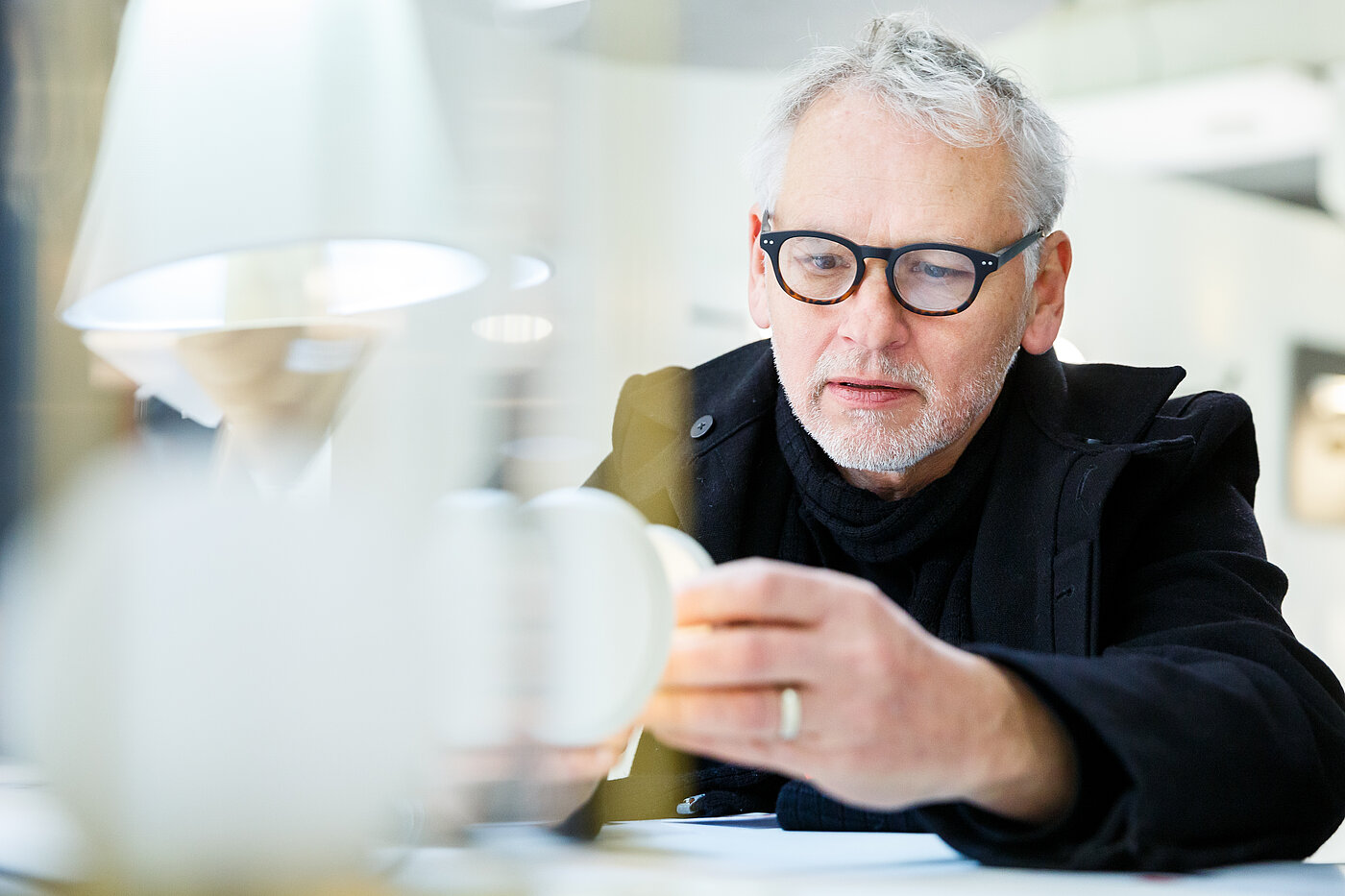Prof. Danny Venlet
Professor Danny Venlet was born in 1958 in Victoria, Australia and studied interior design at Sint-Lukas, the Institute for Architecture and Arts in Brussels. Back in Australia in 1991, Venlet started to attract international attention with large-scale interior projects such as the Burdekin hotel in Sydney and Q-bar, an Australian chain of nightclubs. His design projects range from private mansions, lofts, bars and restaurants all the way to showrooms and offices of large companies.
The interior projects and the furniture designs of Danny Venlet are characterised by their contemporary international style. He says that the objects arise from an interaction between art, sculpture and function. These objects give a new description to the space in which they are placed – with respect, but also with relative humour. Today, Danny Venlet teaches his knowledge to students at the Royal College of the Arts in Ghent.

Red Dot in an interview with Prof. Danny Venlet
Red Dot: Light is your life theme as a designer – would you agree?
Danny Venlet: Yes, light is important for me, having grown up in Australia. Of course I prefer natural light. But in terms of product design, electric light can make or break an interior – in any case, it makes architecture come to life.
What fascinates you so much about the development of luminaires? What – perhaps unconscious – role do light sources play in the design of rooms?
There are two sorts of light fittings used in rooms: functional and decorative. Functional lights are usually integrated and discrete, whereas decorative lighting involves objects that follow fashion and give a certain mood to a space. Of course, they can also be functional. In any case, bad lighting can kill the entire atmosphere.
As a product designer, what is the special challenge in designing a luminaire, but also for the interior designers who choose and place it?
The challenge for the designer is to make a difference. I believe that choosing luminaires – and perhaps I repeat myself – involves look at the atmosphere you want to create, and keeping in mind what the function is. Besides being a stunning object, it also needs to fulfil a function. Luminaires follow both function and emotions.
Does your heart beat more for product design or interior design?
I like both. Product design and interior design interact and have an influence on the designs of the respective project. An interior design can give you a trigger to create a specific light fitting, for example.
Many designers carry a design around in their heads for many years that they would like to realize one day. Do you also have such a “dream project”?
Yes, definitely. Sometimes ideas need to ripen for a while, and sometimes the ideas are too far ahead of their time and need to wait.
Is there any classic luminaire that you admire and consider to be timeless?
There are many, but I am a big fan of Ingo Maurer and I like the light fitting Yoruba Rose Lamp in particular.
The perfect luminaire is …
… an object that enhances the atmosphere, looks amazing or disappears.

